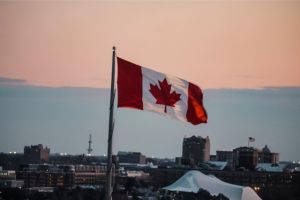Differences between Canada and India.
All of the countries in the world are distributed in different continents that are separated by huge oceanic and geographical barriers, such as oceans, mountain ranges, lakes, volcanoes, rivers, and others. For example, Canada is located in North America while India is located in Asia. Both countries have a huge distance between them that includes the Pacific and the Indian oceans. The flight distance between them is almost 14 hours depending on the departing and arrival location, somewhat around 11,462 km of distance between them. This huge distance makes these two countries as different as can be from one another.
Canada.[edit]
Canada is located in North America, next to the U.S. It is the world’s second largest country by area with 9 984 670 km². Most of the land is dominated by forest, tundra and meadows. 80% of the population lives in cities and its suburbs that is why it is called as highly urbanized country.
India.[edit]
India is located in South Asia, neighboring Pakistan and China. It is the seventh largest country by area with a total of 3 287 263 km². Hinduism is the dominant religion in India. India is a mega diverse country in terms of life. It also is a very rich country in terms of flora and fauna, having many endemic species of mammals, plants, reptiles and birds.
| Canada | India | |
|---|---|---|
| Location | America, more accurately North America. | Located in South Asia. |
| Total Area | The area covered by Canada is 9.985 million km2. | Area covered by India is 3.287 million km2. |
| Population (population density) | Total population of Canada is around 37 067 011 million people. Canada is the 38th most populated country in the world. As a remarkable fact, it has a very low population density, with only 4 people per km². | As for India, the total population of India is 1 353 617 328, and it is second most populated country in the world, only behind China. Its population density is 411.48 people per km². |
| Development | Canada is a highly developed country. It is a first world nation with top living standards and is known worldwide as a top economy. It is actually considered one of the wealthiest nations in the world. It has low unemployment rates and has a high GED per capita, with an estimate of $46,212 USD (which ranks Canada number 16). | India, on the flip side, is a fast-growing economy and developing country. Currently it is considered the 5th largest economy. However, in general terms, Indians have low level lives. In 2006, India had the largest number of people living below the poverty line (by the World Bank) and although they have worked to improve living conditions, not much has changed since. |
| Weather | Canada has a wide rage of climates. It varies a lot from province to province and depending on the season it can go from 40 °C in the summer to -40 °c in winter. In northern Canada, snow can be found for at least 6 months a year. Near the coasts, a template weather is predominant with constant rain. | India has a wide range of climatic regions influenced by the Himalaya ranges and Thar desert. It mainly has warm to hot weather, although as expected, it varies from region to region. During winter it is usually fresh and rarely does it get really cold. Between June and October, the monsoon season can be felt in the whole country and it rains a lot. |
| Nuclear assets | Canada is not a nuclear weapon state. | India is a nuclear weapon state. |


